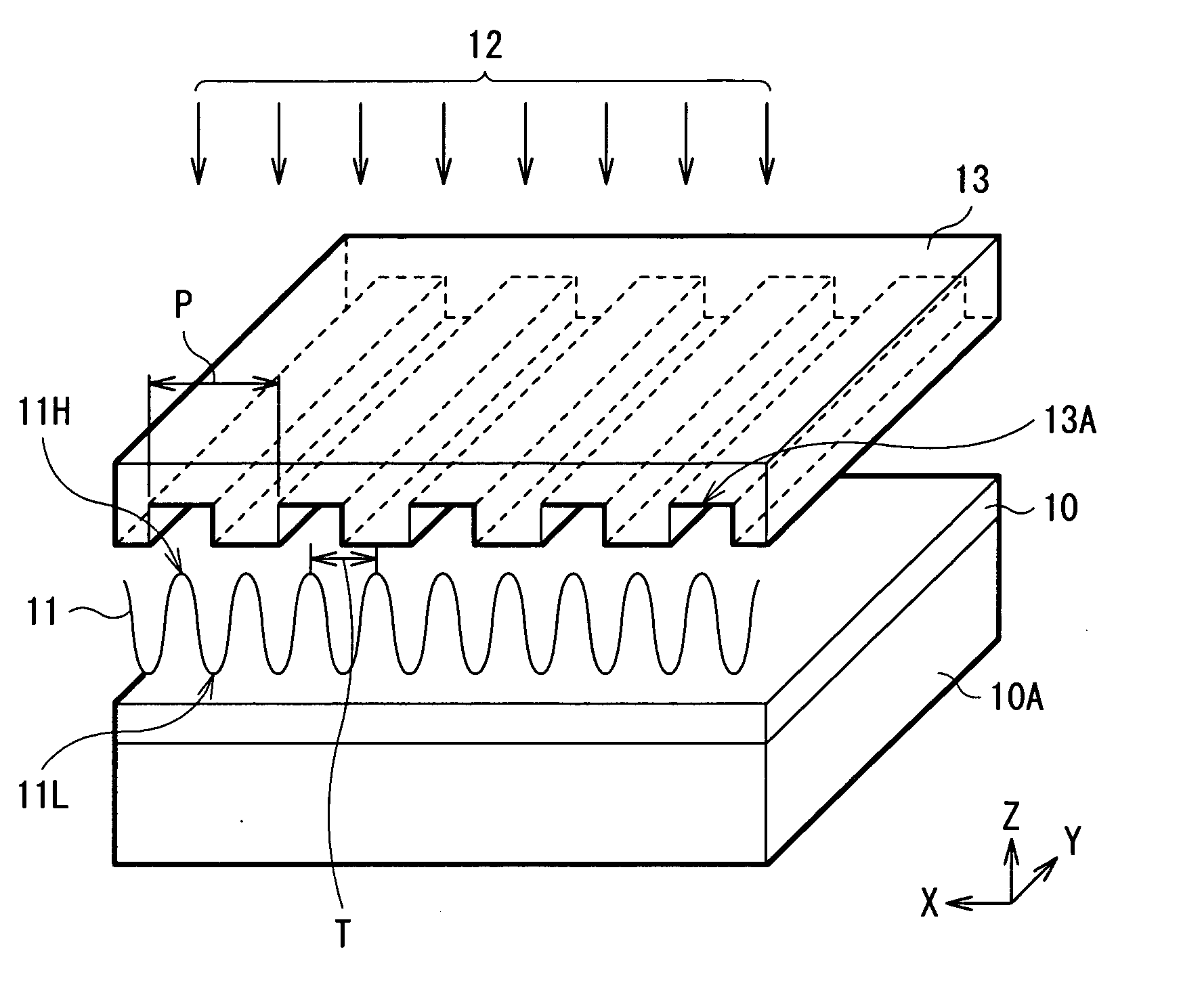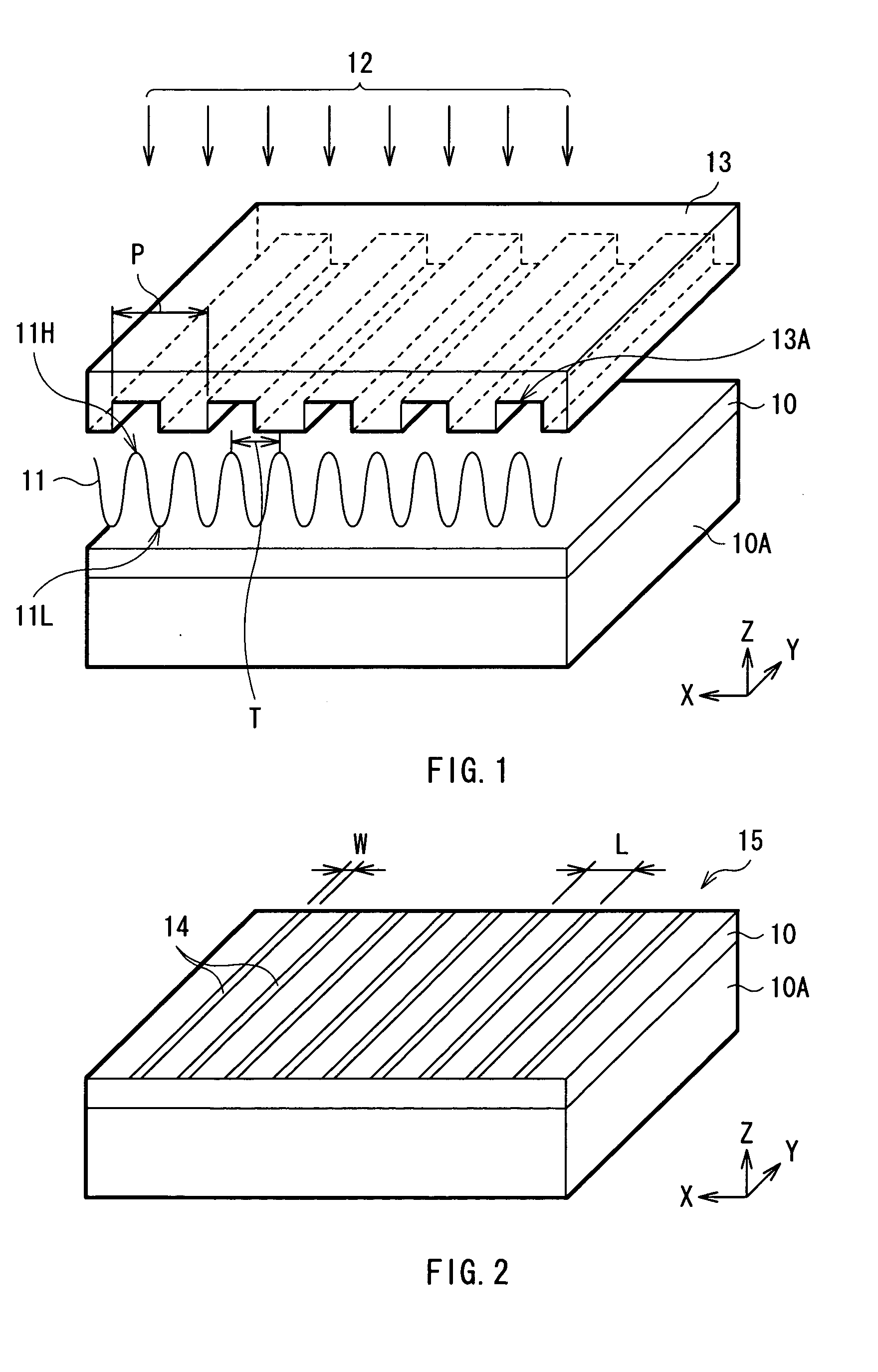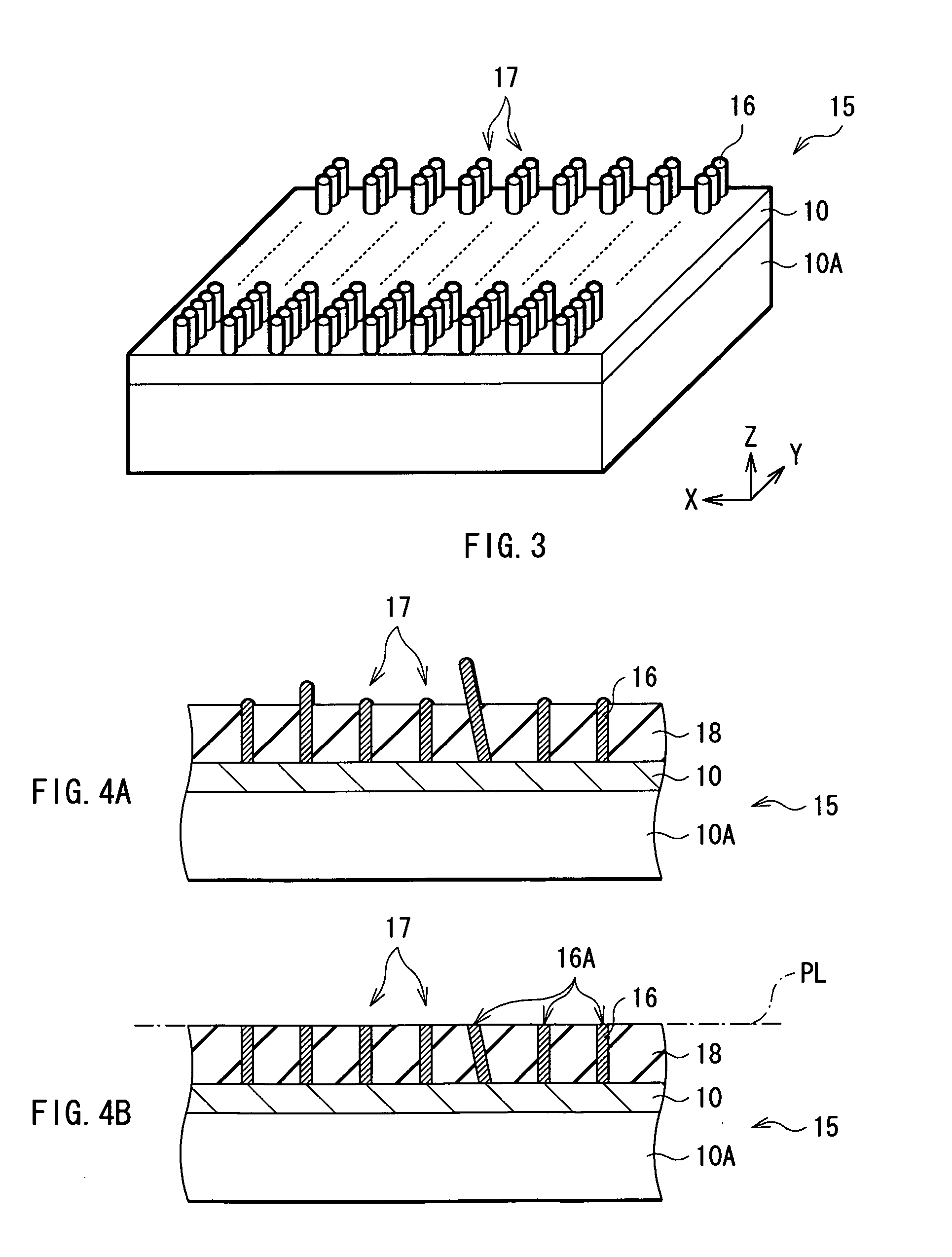Production method for tubular carbon molecule and tubular carbon molecule, production method for recording device and recording device, production method for field electron emission element and field electron emission element, and production method for display unit and display unit
a production method and technology for carbon atoms, which are applied in the manufacture of electrode systems, electric discharge tubes/lamps, and discharge tubes luminescent screens, etc., can solve the problems of only achieving mass productivity with photolithography, and not being suitable for forming a three-dimensional structure such as the carbon nanotube structure,
- Summary
- Abstract
- Description
- Claims
- Application Information
AI Technical Summary
Benefits of technology
Problems solved by technology
Method used
Image
Examples
first embodiment
[0110] At first, referring to FIGS. 1 through 3, a method of manufacturing a tubular carbon molecule according to a first embodiment of the invention will be described below. In the method according to the embodiment, a carbon nanotube structure including a plurality of carbon nanotubes aligned in one direction is formed, and the method according to the embodiment includes “a catalyst arranging step” of arranging a metal having a catalyst function for a carbon nanotube through the use of melting by a modulated heat distribution, and “a growing step” of growing a carbon nanotube through the use of the metal having a catalyst function. The obtained carbon nanotube structure is used as, for example, a cathode of an FED or a recording apparatus.
[0111] In this case, the carbon nanotube structure includes various modes such as a carbon nanotube structure in which a plurality of carbon nanotubes are aligned in a fine pattern, a carbon nanotube structure in which a foreign material is incl...
second embodiment
[0136] Next, a second embodiment of the invention will be described below. The embodiment further includes a height equalizing step of forming tips of the carbon nanotubes 16 in a predetermined plane after the carbon nanotube structure 17 is formed according to the first embodiment, and forming the tips into open tips (open ends).
[0137] In the embodiment, “height” means the position of the tip of the carbon nanotube 16, that is, a distance between the surface of the material substrate 10 and the tip of the carbon nanotube 16. Therefore, the height of the carbon nanotube 16 may be different from the length of the carbon nanotube 16, that is, an actual dimension in an extending direction.
(Height Equalizing Step)
[0138] The height equalizing step will be described below referring to FIGS. 4A and 4B. At first, as shown in FIG. 4A, a fixing layer 18 is formed around the carbon nanotubes 16 to fix the carbon nanotubes 16 by the fixing layer 18. As the material of the fixing layer 18, f...
third embodiment
[0143] Next, a method of manufacturing a carbon nanotube according to a third embodiment of the invention will be described below. In the method according to the embodiment, a desired material is included in tip portions of the carbon nanotubes 16 in the growing step in the first embodiment. The obtained carbon nanotube structure 17 can be used for various uses, for example, depending upon the included material, and in the embodiment, a magnetic material, for example, iron is included so that the carbon nanotube structure 17 can be used as a recording apparatus.
[0144] As a method of including a desired material at the time of growing the carbon nanotubes 16, a VLS (Vapor-Liquid-Solid) method which is a kind of the CVD method can be used. The VLS method uses an effect that a gas including carbon is decomposed to form alloy drops including carbon and a metal having a catalyst function, and carbon nanotubes 16 are grown on the alloy drops in one direction. In the VLS method, as the ca...
PUM
| Property | Measurement | Unit |
|---|---|---|
| thickness | aaaaa | aaaaa |
| surface roughness | aaaaa | aaaaa |
| width | aaaaa | aaaaa |
Abstract
Description
Claims
Application Information
 Login to View More
Login to View More - R&D
- Intellectual Property
- Life Sciences
- Materials
- Tech Scout
- Unparalleled Data Quality
- Higher Quality Content
- 60% Fewer Hallucinations
Browse by: Latest US Patents, China's latest patents, Technical Efficacy Thesaurus, Application Domain, Technology Topic, Popular Technical Reports.
© 2025 PatSnap. All rights reserved.Legal|Privacy policy|Modern Slavery Act Transparency Statement|Sitemap|About US| Contact US: help@patsnap.com



